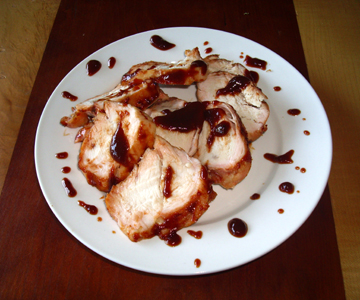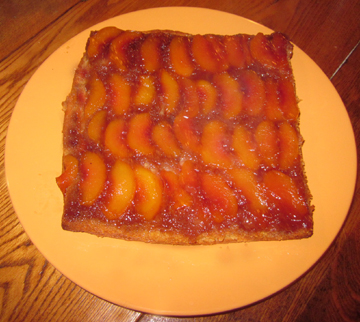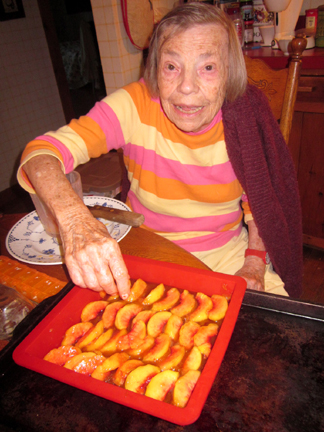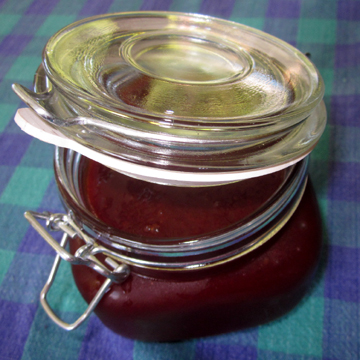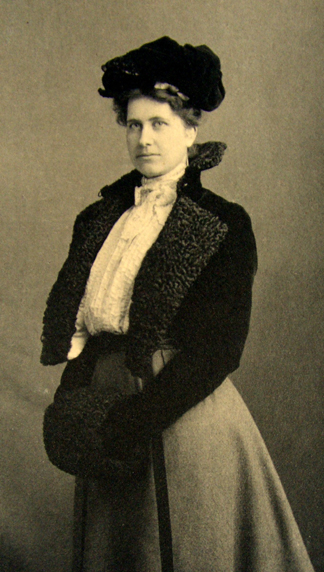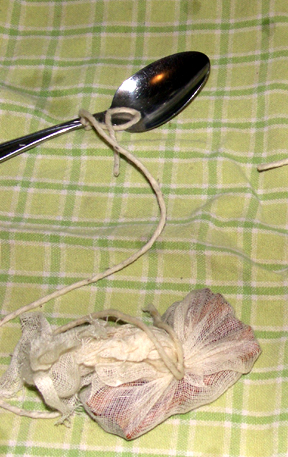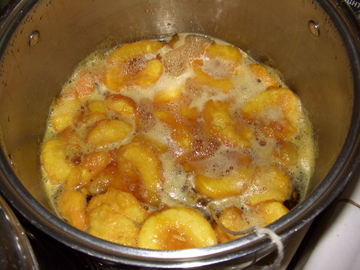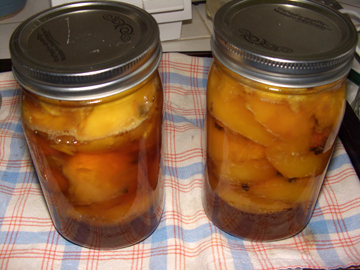Generally, I know what I’m going to get when I test a recipe. Every once in a while, however, I’m completely surprised.
Surprise was definitely the word of the day when I tried this recipe.
Devany Vickery-Davidson is a writer and ceramic artist who lives in Hawaii. Her blog, My Hawaiian Home, features delectable recipes and stories of her adventures in her tropical milieu.
Her dog Valentine is NEARLY as cute as my Truffle. And Valentine has her own lei. (I refuse to show this picture to Truffle!)

Valentine in Paradise (Courtesy of Devany Vickery-Davidson)
Devany recently sent me her homemade ketchup recipe. I was determined to try it out.
I had a lot of tomatoes in the house (not enough, it turned out—Devany DID warn me that one needed a huge garden to make her recipe!). And my nephew Michael is a ketchup fanatic.
I adapted Devany’s Hawaiian-oriented recipe to reflect local ingredients around my home in Hawley, Massachusetts. Devany often uses palm vinegar; I used cider vinegar from Apex Orchards. She uses raw cane and brown sugar; I used maple syrup. She uses a Maui onion; I used a local Vidalia type.
I cooked and cooked and cooked the ketchup. When it was still wet but getting thicker I tasted it.
It didn’t taste ANYTHING like ketchup. My local cider vinegar was way too robust.
At the suggestion of my friend Chef Michael Collins I added more maple syrup and kept cooking. When I tasted the revised ketchup, it still wasn’t very ketchup like.
I was just about to give up when I tasted it again and experienced a moment of epiphany.
My concoction still didn’t taste anything like ketchup. BUT … it DID taste like really good barbecue sauce.
So that’s what I’m calling it.
You’ll only want to make this recipe if you have lots and lots of tomatoes in your garden or farm share; it’s quite expensive per ounce if you go out and buy the darn things.
It’s worth trying if you have a surfeit of tomatoes, however. It’s dark, sweet, and tangy—perfect barbecue sauce, in other words.
Thank you, Devany, for leading me on this adventure! Whatever this stuff is called, it’s delicious.
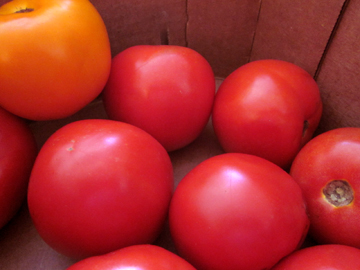
Ingredients:
1-1/2 cups cider vinegar
1/2 teaspoon mustard seeds
1/2 teaspoon allspice
1-1/2 teaspoons celery seeds
2 teaspoons whole cloves
8 black peppercorns
1 fresh bay leaf or 1/2 dried bay leaf
1 cinnamon stick
1 nutmeg nut, grated
12 pounds (5 kilograms) chopped tomatoes—6 to 7 quarts (Devany suggests using Roma or paste tomatoes, but any tomato will do; regular tomatoes, which I used, just have more liquid and will therefore yield less sauce.)
6 cloves garlic, finely chopped
1 large sweet onion, finely chopped
2 Serrano peppers, seeded and finely chopped
1 cup maple syrup
1 tablespoon kosher salt (Devany uses 2 tablespoons coarse sea salt, but I used what I had)
Instructions:
Place the vinegar in a saucepan. Tie the mustard seeds, allspice, celery seeds, cloves, and peppercorns in a piece of cheesecloth. Place the cheesecloth bag in the vinegar along with the bay leaf, cinnamon stick, and nutmeg.
Bring the mixture slowly to a boil; then turn off the heat and let the vinegar sit with the spices for 1 hour. Discard the spices (except for the nutmeg, which will be in the vinegar!) and set the vinegar aside.
In a large nonreactive kettle combine the tomatoes, garlic, onion, and peppers. Heat the ingredients over medium heat, stirring frequently to avoid scorching on the bottom of the pan. Bring the mixture to a boil and reduce the heat; allow the mixture to simmer for 25 minutes, stirring occasionally.
Stir in the spiced vinegar and continue to simmer for another 1/2 hour, still stirring from time to time.
Remove the pot from the heat and put the tomatoes and other vegetables through a food mill. Try to extract as much pulp and juice as you can. Discard the leftover solids, seeds, and skins.
Stir the maple syrup and salt into the tomato mixture, and return it to the heat. Continue to cook over low heat, stirring frequently, until your barbecue sauce achieves the desired consistency. (This took me about 4 hours.)
I ended up with a little less than 1 quart of sauce, but one would probably achieve a larger yield (and a shorter cooking time) with the tomatoes Devany recommends.
